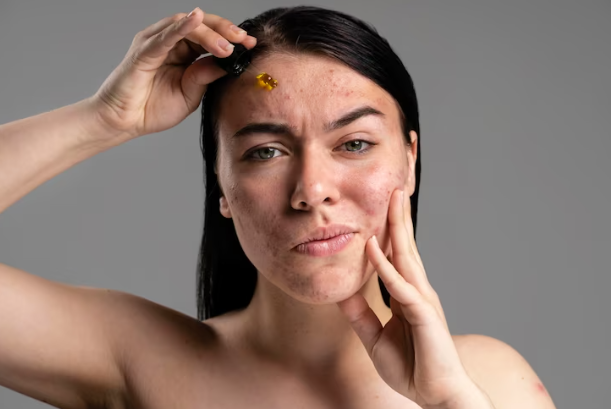Acne, a common skin condition affecting millions of individuals worldwide, often leaves behind unsightly scars that can have a significant impact on one’s self-esteem. While prevention is the best approach to minimize acne scarring, there are several proven methods for reducing the appearance of existing scars. This article aims to provide a comprehensive guide to various methods of acne scar removal, backed by scientific evidence.
The Types of Acne Scars
Acne scars form in different shapes. The main ones are labeled as icepick, rolling, and boxcar acne scars. There are also raised acne scars, which can be keloids.
The type of acne scars you have can determine which types of treatments you’ll need for them.
Topical Treatments to Treat Acne Scars
Retinoids
Topical retinoids, such as tretinoin and adapalene, have been shown to improve the texture and appearance of acne scars by promoting collagen production and increasing cell turnover.
They work by exfoliating the skin, reducing discoloration, and stimulating the growth of new, healthier skin cells.
Non-surgical Treatments to Reduce Acne Scars
Chemical Peels
Chemical peels involve the application of a chemical solution to the skin, which exfoliates the outer layer and stimulates the growth of new skin cells. Superficial peels, such as those containing glycolic acid or salicylic acid, can help reduce the appearance of shallow acne scars. Deeper scars may require medium or deep peels, such as those containing trichloroacetic acid (TCA). Chemical peels should be performed by a qualified doctor’s office to minimize the risk of complications.
Microneedling
Microneedling, also known as collagen induction therapy, involves the use of tiny needles to create controlled micro-injuries in the skin. This process stimulates collagen production and helps break down scar tissue, leading to smoother skin texture. Microneedling can be performed with or without the application of topical serums or platelet-rich plasma (PRP) to enhance results. Multiple sessions are usually required for optimal scar reduction.
Radio-frequency microneedling is a more advanced form of microneedling. It uses heat energy from radio frequency to enhance the results of microneedling on its own.
Fractional Laser Skin Resurfacing
Fractional laser skin resurfacing delivers targeted beams of light to the skin, creating microscopic channels that stimulate collagen remodeling and skin regeneration. This treatment is effective for reducing the appearance of various acne scars, including atrophic, rolling, and boxcar scars. Multiple sessions may be necessary, and downtime after treatment is required.
Laser Facials
Whether using a picosecond laser, a KTP laser, a Pulsed-Dye Laser (PDL) or other type of laser, these tools can be used to perform laser facials that work much more effectively than traditional facials.
Laser skin therapy can target the redness and discoloration associated with acne scars. With vascular lasers, like the KTP or PDL, the laser’s energy is absorbed by blood vessels, reducing their visibility and improving overall skin tone.
These treatments can be an effective standalone treatment or used in combination with other scar removal methods.
Surgical Interventions to Treat Acne Scars
Subcision
Subcision is a surgical technique performed to treat depressed acne scars. The procedure involves using an incision device to release the fibrous bands that pull down the scarred tissue, allowing the skin to elevate and smooth out. Subcision can be combined with other scar removal treatments for optimal results.
Punch Excision
Punch excision is suitable for treating deep and narrow ice-pick scars. In this procedure, the scar is surgically removed using a circular punch tool, and the resulting wound is closed with sutures. The excised scar can then be treated further with other scar removal methods.
Be cautious About Silicone-based Products
Silicone gels and sheets are commonly sold to improve the appearance of scars, including acne scars, and often as a preventative measure. They are thought to create a protective barrier, enhance hydration, and help reduce redness and uneven texture. Silicone products are generally well-tolerated and can be used as an adjunct to other scar removal treatments.
However, research shows that while some silicone gel sheets may work to improve scars, their evidence is weak, and probably biased.
Acne Scars Can be Treated
Acne scars can significantly impact one’s self-confidence, but various effective methods exist to help diminish their appearance. Topical treatments, chemical peels, microneedling, laser therapies, and surgical interventions all offer potential benefits for acne scar removal. It is crucial to consult with a doctor or qualified skincare professional to determine the most suitable treatment plan based on your individual scar characteristics. By employing these evidence-based methods, you can regain smoother, more radiant skin and boost self-esteem.

